

Genealogie Härting
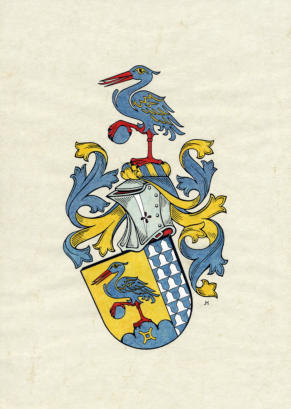
Family coat of arms
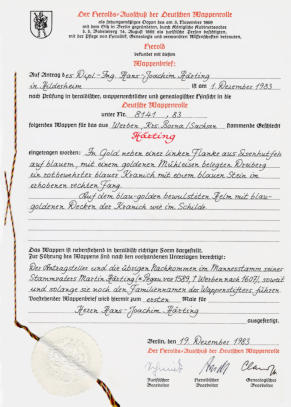
Family coat of arms Härting
(Drawing and draft: H.-J. Härting 1983)
Coat of arms letter of the Herold
about the registration and publication
Of family coat of arms Härting in the German coat
of arms role.
Berlin-Dahlem, 19th of December, 1983
Coat of arms description
C
oat
of
arms:
In
gold
beside
a
left
flank
from
iron
Hutfeh
on
blue
trimount
occupied
with
a
golden
mill
iron
occupied
three
mountains
a
red-reinforced
blue
crane
with
a
blue
stone
in
the
upraised
right
catch.
On
the
blue
gold
beaded
helmet
with
blue-golden covers the crane like in the sign.
A
new
accepted
on
the
22nd
of
October,
1983
from
the
applicant
Hans-Joachim
Härting,
certified
engineer
in
Hildesheim,
under
use
from
master
Johann
Gottlob
(*
1726,
†
1791),
master
Friedrich
Wilhelm
(*
1763,
†
1813)
and
master
Gustav
Härting
(*
1802,
†
1852)
of
controlled
coat
of
arms
seal,
from
the
applicant
heraldically
improved,
in
the
colours
as
well
as
by
addition
of
a
link
flank
occupied
with
iron
Hutfeh
and
a
mill
iron
supplemental,
with
leadership
authorisation
for
himself
and
all
descendants
in
the
man's
trunk
of
the
in
a
document
proved
oldest
ancestor
Veit
Härting
to
Rodden
in
the
office
of
Lützen,
as
far
as
and
as
long
as
it
is
still
proved
to
the
surnames
of
the
coat
of
arms
founder
to
keep.
1
The
coat
of
arms
seal
in
three
documents which are in the Saxon maine state archive Dresden.
Sense interpretation
B
ecause
the
family
coat
of
arms
did
not
correspond
in
the
coat
of
arms
seal,
as
well
as
numerous
other
coats
of
arms
from
the
time
of
the
heraldic
decay
(18th
and
19th
century),
the
today's
principles
of
the
heraldry
in
the
full
extent,
it
had
to
be
improved
at
first
heraldically
and
not
be
complemented
with
addition
(change)
of
new
symbols,
because
of
the
exclusiveness
principle
.
The
basic
colours
blue
and
gold
were
taken
over
from
the
350-year-old
Pegauer
town
coats
of
arms.
The
city
of
Pegau
,
today circle Borna in Saxony, and her surroundings is the family native country of the gender Härting.
The
crane
as
a
main
symbol
of
our
gender,
was
taken
over
consistently
from
the
coat
of
arms
seal.
He
marks
after
a
Äsopischen
fable
not
only
the
watchfulness
(Forest
rider,
Country
juror,
village
judge
and
Justice
of
the
Peace),
but
also
reminds
of
the
Leipzig
scenery
with
the
numerous
water
mill
ponds
and
crane's
breeding
places,
generally
in
completely
Saxony.
The
three
mountain
has
seen
heraldically
for
our
gender
no
particular
importance.
He
serves
merely
as
a
parking
lot
for
the
crane without other explanatory power.
The
link
flank
occupied
with
iron
Hutfeh
in
the
coat
of
arms
sign,
should
remind
of
the
honourable
old
craft
of
the
furriers
in
the
Bothfelder
line.
The
Härtingschen
furrier
were
in
the
18th
and
19th
century,
at
least,
with
six
families
in
three
generations
(1742
-
1846)
masters
in
this
craft.
Later
particularly
the
craft
occupations
have
asserted
themselves
with
all
descendants
of
this family line till the today's time.
The
150-year
milling
tradition
(1707
-
1851)
in
the
Werben
line
is
expressed
through
the
own
of
coat
of
arms
and,
additionally, symbolically through the addition of a
mill iron
.
Signet interpretation
I
f
we
look
at
the
seal
field
of
the
found
coat
of
arms
seal
a
little
more
exactly,
we
recognise
in
it
a
full
coat
of
arms
with
the
following inscription:
.
HERRL: HÄRTINGISCHE GERICHTE U. OBERMÜHLE B. PEGAU.
(Gloriously: HÄRTINGISCHE COURTS AND UPPER MILL AT PEGAU)
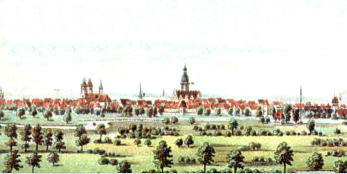
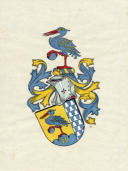
Härting
Lacquer seal impression
with the Härtingschen
family coat of arms from
1840
Family history research in Saxony



Uses a family crest
1
The family line submitted with the herald in 1982 does not correspond any more to the newest state of research, because this was extended, in the
meantime, by three generations..
How
is
to
be
taken
from
the
technical
literature,
the
seal
inscription
calls
as
a
rule
always
the
seal
owner
and
therefore
the
sole
owner
of
the
coat
of
arms
seal.
Further
is
to
be
recognised
from
the
inscription
that
it
concerns
in
this
case
no
authority
seal,
but
exclusively
a
civil
seal.
In
course
axes
there
were
already
since
the
16th
century
central
administrative
authorities,
that
is
office
people
with
smaller
administration
offices
and
court
places for the local area. Because they led,
This
knowledge
proves
that
it
concerns
with
the
Härtingschen
coat
of
arms
seal,
at
last
controlled
by
master
Gustav
Härting,
the
owner
of
the
chancellery
written
feudal
estate
upper
mill
with
Pegau,
undoubtedly
around
hereditary
and
personal
civil
seal
which
identifies
itself
in
the
seal
inscription
as
well
as
in
the
seal
field
(family
coat
of
arms)
clearly
as
such
with
own
administrative function and court function and was used for official purposes.
however,
everybody
still
no
office
seals,
they
used
the
personally
very
own
seals
of
the
officials.
So
also
the
owners
of
the
chancellery
written
feudal
estate
mills
who
were
not
subjected
to
the
offices
but
own
authorities
had.
In
Saxony
one
has
the
impression
that
in
most
cases
the
middle-class
family
coat
of
arms
appeared
generally
only
in
the
seals
and
therefore not further.
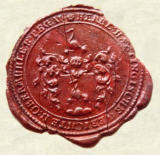

Signet ring
with engraved family crest and rimmed pale
blue layer stone (14 ct. gold., 585)
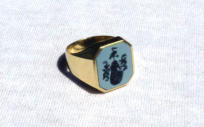
Lacquer seal impression
Imprint with the above signet ring
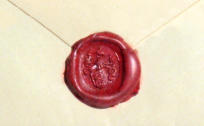
Crest embossing press
for blind embossing on letterheads,
cards and documents
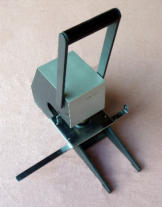
Blind embossing
with the above coat of arms embossing press
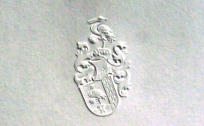
Hand carved family crest
in deposited linden wood of openwork type
and colored with colored special stain
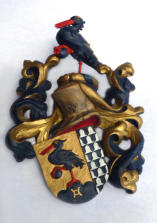
Personal column
e.g. for birth, mourning and death announcements
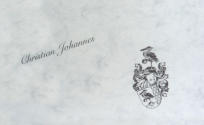
Grave stones
coat of arms engraving in stone
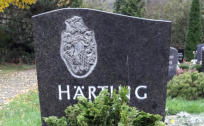



Pegau around 1625
A notice:
All native Härting name bearers listed in the list of names are relatives and are therefore
entitled to use the Härting family coat of arms.
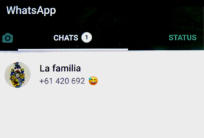
Smartphone
Family coat of arms as a separate profile













